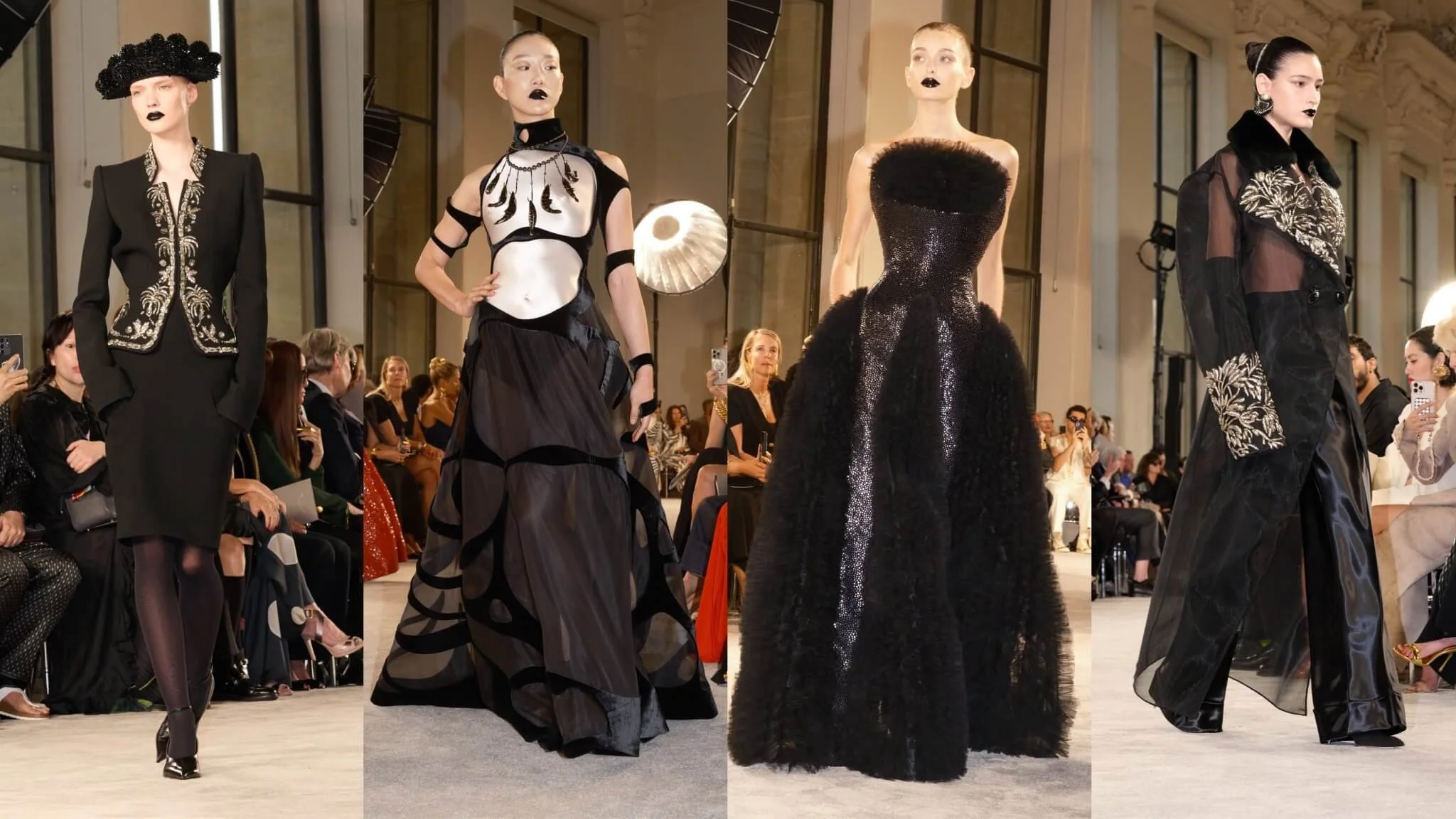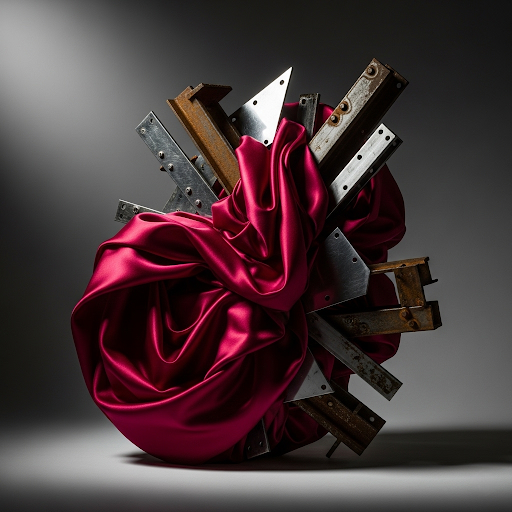The Architecture of Intent
A Critical Lexicon
This collection of studies is the intellectual architecture of Post-Luxury Conceptual Functional Art (PLCFA).
The true artistry of this Maison resides not in the finished form, but in the rigorous thinking that precedes it. These essays serve as the conceptual foundation for PLCFA, using a critical lens to interrogate cultural phenomena, art history, and consumer paradigms—analyzing everything from the ephemeral spectacle of luxury to the pure architectural rigor of abstract principles.
This is an invitation into the workshop of the mind. By sharing this process, we validate the necessity of a new category of value and invite you toward a well-considered life, one founded on true craft, uncompromising narrative, and durable meaning.
New to PLCFA? Begin with Essential Reading below.
Exploring a specific area? Navigate by category.

Doris Salcedo: The Function of Suffering—Memory, Emotional Labor, and Political Witness in Post-Luxury Conceptual Art
The Post-Luxury paradigm begins with the recognition of a profound intellectual and ethical vacuum at the heart of contemporary culture, driven by the collapse of traditional luxury’s value equation. This study argues that the definition of function is too narrow—it fails to account for the essential human experiences, like collective memory and the reckoning with trauma, that constitute necessary human labor. This Function Gap is addressed by Doris Salcedo, whose objects possess a fierce utility by performing non-commodifiable, enduring social work. Her practice transforms art from a status symbol toward a ritual tool for collective conscience, shifting its role decisively from the logic of possession toward a logic of being. Read the full study to see how the work of this Philosophical Architect changes everything.

Carol Christian Poell: The Alchemical Designer, Post-Luxury's Radical Critique of Materiality and the Smooth Society
Carol Christian Poell stands not merely as an avant-garde designer, but as a critical theorist whose chosen medium for philosophical inquiry is the garment. This study positions him as the definitive Philosophical Architect of the Post-Luxury world, whose entire body of work—from the visceral reality of blood-tanned leather to the anatomical disruption of the Spiral Pants—is a sustained argument against the Hyperreality of mainstream luxury. He rejects the frictionless aesthetic of the "Smooth Society" by demanding endurance from the wearer (the Drip Sneaker) and delivers his critique through industrial alchemy: a methodology that uses injected dyeing to expose the material's vascular networks and employs the grotesque to reject sanitation. We explore how Poell transforms fashion from a disposable commodity into a potent site of political and material inquiry, proving that the object's true worth resides in the difficult, non-transferable history of commitment co-created by the wearer over time.

Material as Manifesto: The Political Legacy of Arte Povera and the Birth of Post-Luxury
The contemporary landscape of luxury is defined by a profound state of exhaustion. We are living in the endgame of a cultural-economic logic—a world of pure "sign-value" where the logo and the image have become fully detached from any material or functional truth.
This crisis of value, however, is not new. It is the mature, collapsing phase of a system whose nascent, corrupting influence was first identified and radically opposed over half a century ago. Emerging from the radical political atmosphere of 1960s Italy, the movement known as Arte Povera—literally "Poor Art"—was the first organized, philosophical, and material response to the colonization of culture by mass consumerism.
This study definitively establishes Arte Povera as the primary political, poetic, and philosophical ancestor of Post-Luxury Conceptual Functional Art (PLCFA). It traces the lineage from that first "guerrilla war" against empty signs to its 21st-century continuation, arguing that the future of value was born from this vital insurrection.

The Liquidation of the Simulacrum: Why the $23M Castello Cube Collapse is the Default-State of Hyperreal Value and the Ultimate Case for PLCFA
The spectacular collapse and forced liquidation of the twenty three million dollar Castello Cube is not merely a sensational financial failure but a profound philosophical event a real world parable of the Baudrillardian Simulacrum collapsing under the weight of its own nonexistence; this event serves as the perfect object lesson in the structural fragility of hyperreal value showing exactly what happens when an object built entirely on pure sign value completely detaches from tangible function critical craft or an enduring narrative of Intangible Provenance; this definitive market action exposes the ultimate Default State where a frictionless speculative asset lacking any true structural anchor inevitably reverts to its primitive base exchange value like a commodity the sheer brute reality of four hundred pounds of inert gold crashing into the digital illusion of wealth which is precisely the moment the market is forced into a brutal reassertion of the Un Smooth aesthetic defined by Byung Chul Han; this devastating Crisis of the Ephemeral is the ultimate diagnosis of Systemic Exhaustion in the old luxury model creating the exact intellectual and commercial vacuum that only our new framework of Post Luxury Conceptual Functional Art (PLCFA) can successfully fill by demonstrating how to embed a durable unhollowable Structural Legacy using elements like verifiable Critical Craftsmanship and narrative-anchored value that are truly immune to the financial state of the custodian.

The Missing Mass: Gregory Sholette’s 'Dark Matter' and the Political Economy of Post-Luxury Conceptual Functional Art
Why does modern luxury feel so hollow? We have diagnosed a "state of exhaustion," a system hollowed out by its own paradoxes, where price is detached from reality and meaning has been systematically stripped away. This study argues that this emptiness is a direct consequence of luxury's structural dependency on what theorist Gregory Sholette calls "artistic dark matter."
This is the vast, unacknowledged surplus of creative labor, the subcultures, activists, and community artists, that the mainstream simultaneously depends on and renders invisible. The luxury industry, unable to generate its own creative fuel, survives by cannibalizing authenticity. We trace this pattern from the appropriation of punk and hip-hop to the cynical "poverty chic" of Balenciaga and the complex "re-legitimization" of Dapper Dan.
This process reduces culture to "bare art," a pure commodity. This report reframes Post-Luxury Conceptual Functional Art (PLCFA) not merely as an aesthetic shift, but as a vital political and economic counter-paradigm. It is the framework that shows how this "dark matter" can finally "brighten," codifying its inherent values of autonomy and narrative depth into a coherent system of resistance.

Hiroshi Fujiwara and the Architecture of Post-Luxury Influence
A groundbreaking analysis of Hiroshi Fujiwara as a cultural architect whose work transcends design to reveal a new blueprint for influence. This study, Hiroshi Fujiwara and the Architecture of Post-Luxury Influence, dissects how his career reframed value by replacing empire with intentionality, spectacle with discretion, and inheritance with earned authority. We propose that Fujiwara's Fragment Design lightning bolt functions not as a traditional logo but as a monogram of philosophy—a structural element in a new paradigm of Post-Luxury Conceptual Functional Art. This work is essential reading for anyone seeking to understand the unseen forces shaping contemporary culture.

Robert Ebendorf: Found Objects, Philosophical Objects, and Post-Luxury Conceptual Functional Art
Robert Ebendorf is a pivotal figure whose lifelong practice defines Post-Luxury Conceptual Functional Art (P.L.C.F.A.). Operating as an alchemist of the overlooked, he challenges the traditional notion that artistic value must be derived from intrinsic material wealth. Ebendorf's ethos is to find "order and beauty out of chaos," transforming the discarded detritus of modern life—from rusted beer tabs to prosthetic eyes—into philosophical objects of profound personal and aesthetic worth. His work centers on Material as Story, elevating an object's ethical provenance and found history over its market price. By applying rigorous metalsmithing skill to non-traditional elements, Ebendorf’s functional jewelry acts as a powerful critique of consumption, making the act of wearing a piece a commitment to stewardship over ownership.
To understand the profound impact of this conceptual rebellion on contemporary craft, continue reading the full study.

The Paris Fashion Week Paradox: Why the 18-Collection Calendar Kills Creativity and Signals the Death of Traditional Luxury
The contemporary luxury fashion calendar, driven by the financial mandates of corporate oligopolies, has systematically dismantled the core value proposition of traditional luxury. Houses are now compelled to produce up to eighteen collections annually, a pace that directly eliminates the time required for artisanal precision and visionary design. This relentless acceleration transforms the designer into a high speed content generator and shifts the $25,000 couture piece from an enduring investment into stylistically obsolete marketing collateral within six months. This systemic failure finds its necessary antidote in Post-Luxury Conceptual Functional Art (P.L.C.F.A.), a new paradigm that rejects transient status appeal, placing value instead in enduring intellectual depth, narrative, and ethical alignment. The future of authentic high fashion resides in this seasonless, philosophical approach, restoring the garment as a significant object of cultural value.
To understand the full scope of this self destructive cycle and the necessary emergence of Post Luxury Conceptual Functional Art, continue reading the full study.

The New Avant-Garde: Deconstructing Status and Utility in the Age of Post-Luxury
In the realm of global commerce, an ancient contract has finally been broken.
For a century, the gilded façades of luxury promised permanence, rarity, and status through price. That promise has been hollowed out—by relentless scale, ethical opacity, and the exhaustion of the logo. We stand at a cultural inflection point where the question is no longer what does it cost? but what does it mean?
Into this vacuum emerges The New Avant-Garde: a powerful, polyphonic movement of global makers crafting Post-Luxury Conceptual Functional Art (P.L.C.F.A.). These are not commodities designed for disposal, but vessels of memory and gestures of permanence. They are objects that elevate story over material, connection over exclusivity, and authenticity over image.
This is the definitive study of a structural collapse and the quiet, profound transformation it has yielded—a look at the thinkers, artists, and ateliers, from Kyoto to Cape Town, who are insisting that the future of value lies not in scarcity, but in resonance, and that the ultimate luxury is a meaning made tangible.
